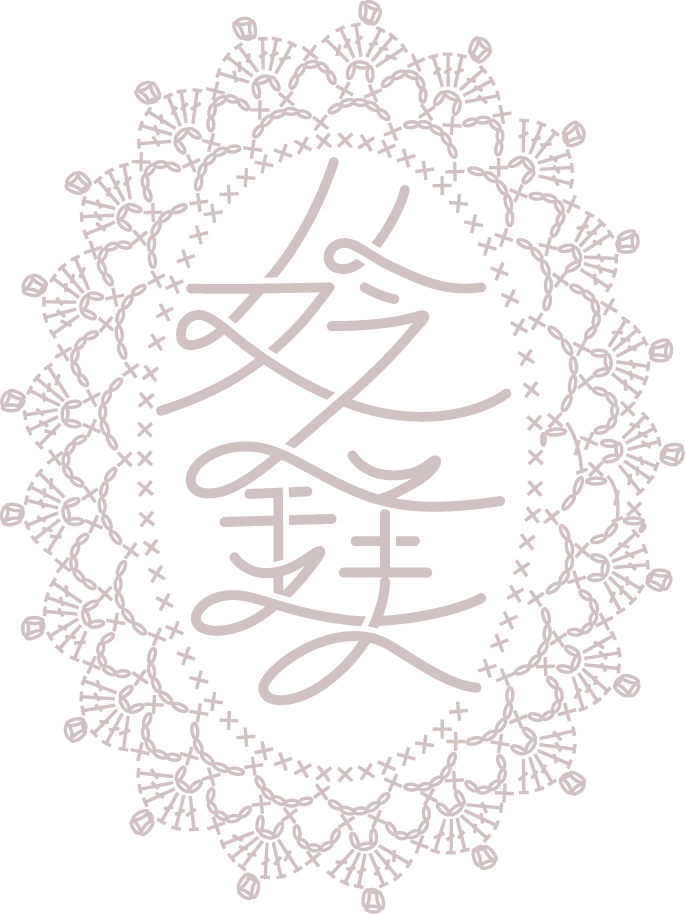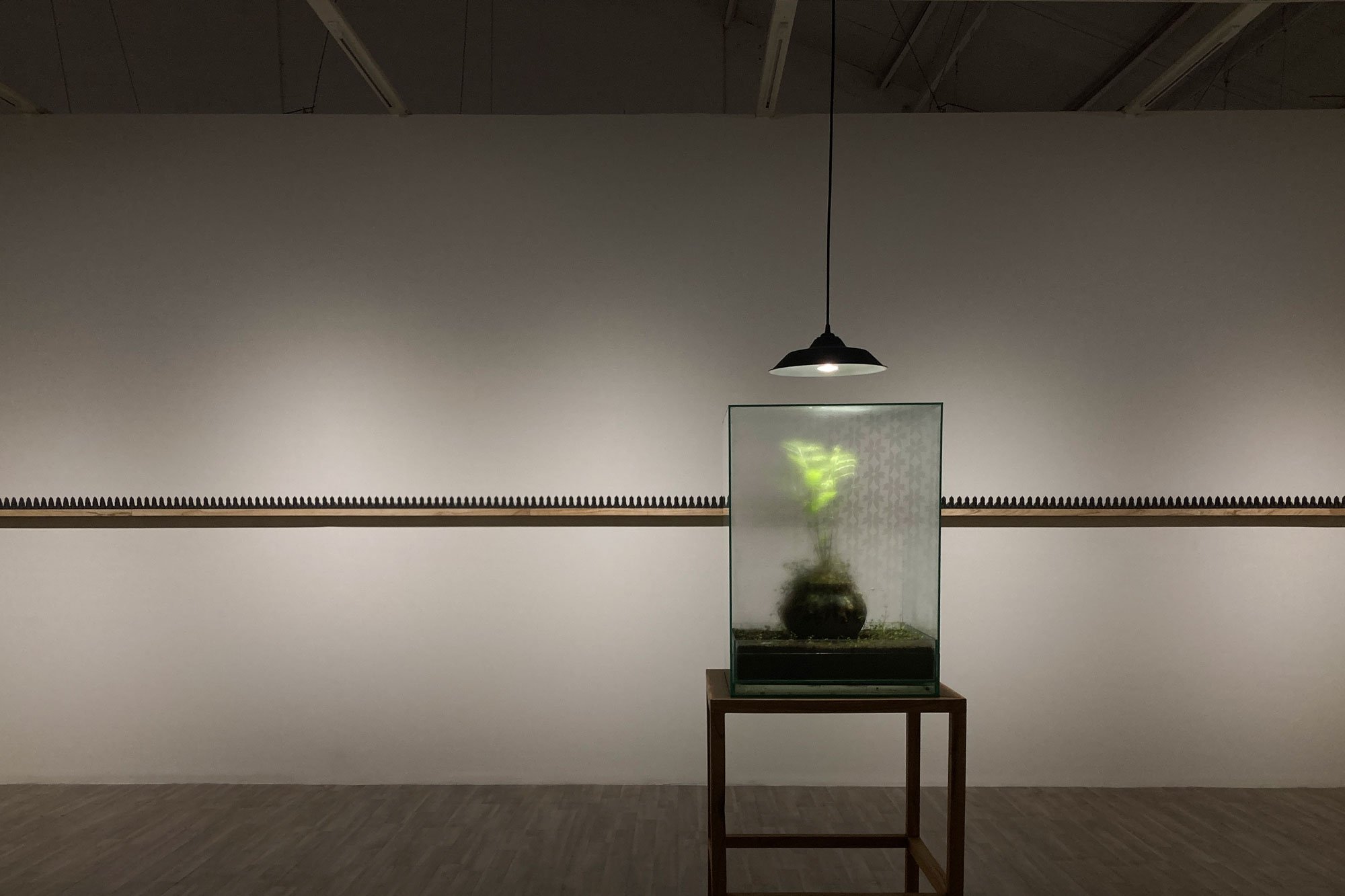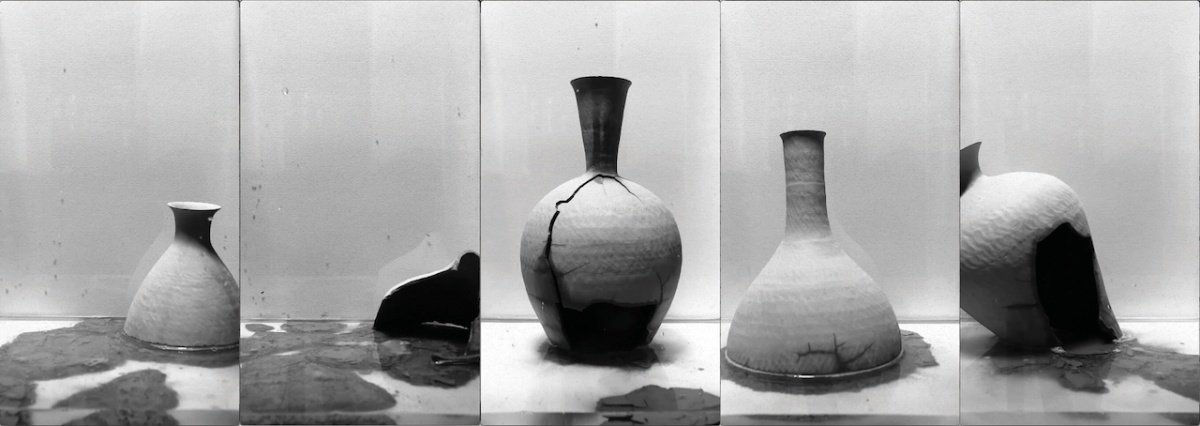We arrived late in the night on ferry to Shodoshima, and the streets were pitch dark. Not a single street light. We had to use the lights from our phones under an inverted plastic bag to create a temporary lamp while waiting for the bus to our ryokan. Upon arriving, we fell right asleep on the futon, and it was not till the next morning when we looked out the window and saw something strangely out of place— a sparkly disco ball on which a dragon-like creature sat.
Star Anger, 2015, at the end of the pier in Sakate, Shodoshima. Yanobe Kenji.
That was my first encounter with a public ‘artwork’ and with the Setouchi Triennale, though I knew nothing about it then. Little would I know that a year later, I would be making my way back to the area as a volunteer with the Koebi-tai NPO, in 2019 as a staff member, and this year, as a guest— though I always feel like I’m coming back home.
I have encountered the Setouchi Triennale 3 times so far, from 3 very different points of view; and each time has felt very different. While this article would be focused mostly on the Spring season of the 2025 edition, I will also throw in some comparisons from previous years and contextual information. (This is a growing article that will be updated)
This article also serves as a summarised introduction for people completely new to the festival, with helpful links (reservations, bus schedules). There will be a focus on Megijima, Ogijima and Shodoshima, since I feel English information for these is limited compared to the popular Benesse Art Sites.
Introduction to the Festival
Volunteers from Koebi-tai doing mi-okuri (sending off the ferry by waving flags), last day of Spring season 2025, Ogijima.
Concept & Community
The Setouchi Triennale debuted in 2010 helmed by Fram Kitagawa, who had also launched the Echigo-Tsumari Triennale comprising 6 regions in Niigata back in 2000. The plan for Seto-gei (an abbreviated form of ‘瀬戸内芸術祭 Setouchi Geijyutsu-sai’) and Echigo-Tsumari 越後妻有 (also known as ‘大地の芸術祭 Daichi no Geijyutsu-sai’) was the same— to revitalize a region that was suffering from depopulation, and re-introduce a sense of purpose to the ageing locals whose main livelihood (mostly farming) had become undermined by commercialisation and the move into new industries such as technology. “Places exist in space but also in time,” Kitagawa writes, and it is this reason that most artworks of the festivals are site-specific and temporary, considering the direct environment, community and materials. They might not last forever, protected in crates or secure white cubes; yet they create memories and move people.
Another point that makes these 2 festivals different from others around Japan (or the world) is the heavy focus on community involvement— volunteers basically carry the festival, from artwork production to manning the reception desks. The Kohebi (little snake) group in the Niigata area and Koebi (little shrimp) group in the Setouchi area are NPO organisations that serve as an important bridge between the organisers (Kitagawa’s Tokyo Art Front Gallery) and the volunteers who come from all age groups and backgrounds; in the case of Seto-gei, it sees a lot more international volunteers (roughly half of the volunteers are foreign— and no, you don’t need to be able to speak Japanese to join).
This inclusion of the community helps to boost pride and morale in the festival, as Kitagawa believes it is important for the locals to be involved in order to understand and feel engaged to this foreign concept of ‘art’ suddenly appearing in their immediate environment. His plan seems to be proving true, as the locals, however resistant in the beginning, have learnt to embrace the change. Seto-gei is seen as the biggest and most successful Art Triennale in Japan, one that has truly impacted the region hosting it.
Kitagawa has mentioned in his book that the Japanese practiced ‘traveling as a discipline’ since ancient times, but the efficiency of today’s travel has made it ‘a means to cover distance’ and leaves ‘little room for individual effort and creativity’. By spreading the artworks out across the region, the visitor’s experience is guided by the artworks. In short, the artworks are not just a ‘destination’, and serves as a medium for you to interact with the landscape and its changes through the seasons— a deliberate, “inefficient” journey.
“Art should serve some function for the people living in the place... should be integrated into the fabric of the city, as opposed to having some sort of autonomous assertion of its own separate existence...
Art is a medium that can move and transform people.”
Recommended reading: Art Place Japan by Fram Kitagawa
Should I buy the Triennale Passport?
In the area of the Setouchi Inland Sea is thousands of islands, but only 11 are involved in the festival. In total, there are 17 areas to explore, comprising some on the mainland either close to the ports (e.g. 津田 Tsuda, 引田 Hiketa) or which used to be islands before being connected to the mainland by land reclamation (e.g. 瀬居島 Seiijima, a new area in 2025). The festival is also strategically split into 3 seasons, with some regions showing only in certain seasons, appealing to visitors to make a trip back.
Visitors are encouraged to purchase a ‘Triennale Passport’, which allows them one-time entry into all Triennale artworks and most museums, though some might incur extra fees. While it is also possible to purchase individual tickets to specific artworks (available at the reception of each artwork, cash only), the entry price this year has been raised to 500JPY each, making the passport a much more cost-effective option (viewing just 9 artworks would cost 4,500JPY, which is the price of a single-season Passport). The 3-season Passport allows one to view all artworks across Spring, Summer and Autumn, and costs just 5,500JPY. However, if you are living outside Japan, the single-season Passport makes more sense.
If you purchase online via the Setouchi Triennale App, you will be able to use the Digital Passport (unique QR code for each person) on your smartphone; this is scanned at each artwork’s reception counter. While it is much faster and more convenient (you don’t have to worry about forgetting the paper Passport in your hotel room!), you miss out on accumulating the Passport stamps, which has always been a fun feature of the festival. If you have purchased the passport from convenience store machines or online websites that require you to EXCHANGE for a paper Passport, you can do so at the individual artwork reception counters only if you have the PHYSICAL TICKET for exchange— if yours is a QR code, you have to exchange for it at the Takamatsu Port General Information Center or other venues on the mainland. That QR code will not work once you are on the islands, so take note if you don’t want to have reached an artwork and be denied entry.
Important Points (Closure dates, Required reservations)
This article will focus on the areas accessible from Takamatsu: below is a list of the main areas and some important notes (information from guidebook).
All-Season Areas:
• Naoshima: CLOSED ON MONDAYS | Transportation on island: Bus, Bicycle | Some Artworks and museums require advance individual reservations
• Teshima: CLOSED ON TUESDAYS | Transportation on island: Bus, Bicycle | Teshima Art Museum requires advance reservation and separate fee
• Megijima: CLOSED ON 8/20, 10/22, 10/29
• Ogijima: CLOSED ON 8/20, 10/22, 10/29
• Shodoshima: CLOSED 8/20, 10/22, 10/29
• Oshima: CLOSED ON 8/6, 8/20, 10/4, 10/22, 10/29 | Only 1 Café with limited food
• Inujima: CLOSED ON TUESDAYS (and during bad weather)
• Takamatsu Port area: CLOSED ON TUESDAYS; Check website of Shikoku-mura for possible change in opening hours
ARTWORKS/MUSEUMS REQUIRING RESERVATION— Click for Link
• Chichu Art Museum (Naoshima)
• Teshima Art Museum (Teshima)
• Naoshima New Museum of Art (Naoshima— Newly opened in May 2025)
• Hiroshi Sugimoto Gallery (Naoshima— New artwork)
• Minamidera (Naoshima— Part of Art House Project; James Turrell artwork)
• Kinza (Naoshima— Part of Art House Project; Rei Naito artwork)
For the list of artworks above, it is almost impossible to book a ticket on the day itself, so do reserve in advance.
Navigation: Ferries
Map cropped from official site showing numbered routes
• Overall ferry schedule on official site
• Megi-Ogi Ferry Schedule (route #8)
• Shodoshima - Takamatsu Ferry Schedule (route #9)
One friend commented that she would need a doctorate to properly plan for this festival— and it sure feels like it. Even with the guidebook, the numerous ferry boarding points, bus timings, ferry timings, is enough to scare off even Japanese-speaking foreigners like myself.
You are not able to buy advance ferry tickets (aside from the 3-DAY FERRY PASS which you can purchase through the Official App); most counters open 30mins before the ferry departure time. The Ferry Pass does not allow access from Takamatsu to Teshima, only from Uno (Okayama).
DON’T MISS THE FERRY— the timing stated is the timing it SETS OFF, so always arrive at least 15mins before. There are also a couple of different boarding points and ticket sale counters that are situated on the far left and right ends of the port, so be early for some buffer time. There will be 2 queues: 1 to get the ticket at the counter, another to board at the pier. Be sure to queue for the boarding even after you have your ticket!
TESHIMA
From Takamatsu to Teshima (route #6: direct, route #5: via Naoshima), the ferry is small and can take only about 100 people, so many people start queuing 1 hour before. If you are not early enough, you might be pushed to the next departure timing which can upset your plans (especially if you have a museum reservation).
INUJIMA
If you are visiting from Okayama, I highly recommend visiting Inujima (route #13, #15)— there is no direct ferry to Inujima from Takamatsu, so you would have to pass through either Naoshima/Teshima (route #4) or Shodoshima (route #14) to get there. Okayama also has ferries to Naoshima, Teshima and Shodoshima.
MEGI & OGI
Megi and Ogi are accessible by the same and only ferry: setting off from Takamatsu, it reaches Megi in 20mins, then moves on to Ogi in another 20mins (route #8). It is very straightforward, and you can do both islands in the same day. While the ferry can be very packed, it is seldom that you are unable to board from Takamatsu. If you’re planning to do both islands in a day, you cannot buy a round-trip ticket; you will buy 3 single-trip tickets. The price remains the same, but you have the slightly troublesome job of locating the ticketing counter on the islands and buying the ticket (which I recommend you do in advance to avoid the mad rush before boarding).
SHODOSHIMA & NAOSHIMA
For Naoshima (route #1) and Shodoshima: Tonosho (route #9), there is a choice of the big ferry (slower and cheaper), and hi-speed ferry.
As there are limited rental cars on both islands and not all of them are willing to rent to foreigners, renting from Takamatsu and driving up to the ferry is a possibility (additional fees required).
OSHIMA
Oshima is very different from the other islands since it has a very difficult history— it used to be a sanatorium for leprosy or ex-leprosy patients. The ferry is free to take, and usually quite empty due to the smaller number of works.
Navigation: on Islands
• Naoshima Shuttle Bus schedule
• Teshima Bus schedule
• Megijima Bus schedule
• Shodoshima ORIX Rental Car site
NAOSHIMA & TESHIMA
I recommend taking a bus around the popular Naoshima and Teshima if you don’t usually exercise (like me)— the slopes pose a bit of a challenge, even with the electric bicycle. However, that means a lot of planning for bus timings and wandering around the sometimes maze-like island paths trying to locate a bus stop. My advice: Leave A LOT of buffer time for everything, give more time for each spot (and lunch), suss out bus stop locations for the return trip the moment you arrive. There is a town bus in Naoshima, but I recommend focusing on shuttle bus timings, then walking to areas around the bus-stops.
MEGIJIMA
The only location for which you need a bus is the Onigashima Cave, which is possible to trek to but not recommended. There are 2 artworks at the cave, and a round-trip ticket costs 1,000JPY (single trip is 700JPY). Please note there is also an entry fee (600JPY) to the cave even if you have the Triennale Passport. For everything else, it is totally possible to walk as the island is small and relatively flat, though bicycle rentals are available.
OGIJIMA & OSHIMA
Both Ogijima and Oshima are small enough to get around on foot; Ogi has quite a lot of slopes so do expect to trek a bit.
SHODOSHIMA
If anyone has told you it is possible to explore Shodoshima by bicycle or walking, they are either very strong people or lying! I highly recommend a rental car in order to fully enjoy the island as it is huge; 1 night stay is recommended. However, many car rental companies do not rent to foreigners even if you have an international license, so do check in advance. I recommend ORIX Rent-a-Car: they are open to foreigners, and very close to Tonosho port.
This marks the end of Part 1; now that we have gotten the pesky information bits out of the way, the next article (or more) will be focused more on the artworks on different islands and which I recommend.
























